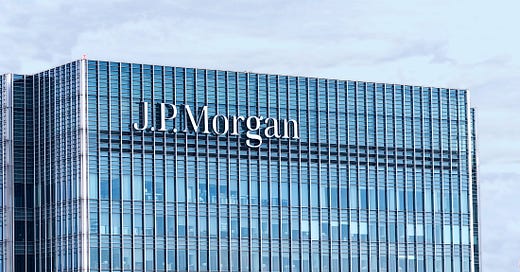Highlights
Ex. First Republic, ROTCE was an above-target 21% in Q2 2023
Deposits were better than expected, FY23 NII outlook was raised
However, NII has likely peaked and credit losses are rising
At $149.77, shares are at 1.9x P/TBV and 11x normalized P/E
We see a total return of 49% (18.1% p.a.) by 2025 year-end. Buy
Introduction
JPMorgan (“JPM”) released its Q2 2023 results on Friday (July 14). Shares finished the day up 0.6%, capping a week when they rose 3.8% and reached a new 52-week high:
JPM Share Price (Last 1 Year)
Source: Google Finance (17-Jul-23).
We have followed JPM for over a decade, and our current Buy rating dated back to an upgrade in April 2022. (For a recap of our JPM investment case, see our Substack article in April 2023.) Since that upgrade, JPM shares have gained 21.9% in 15 months (including dividends).
JPM’s Q2 2023 results support our investment case, but earnings are likely to fall hereafter. Excluding a one-off gain from the First Republic (“FRC”) acquisition, Return…




